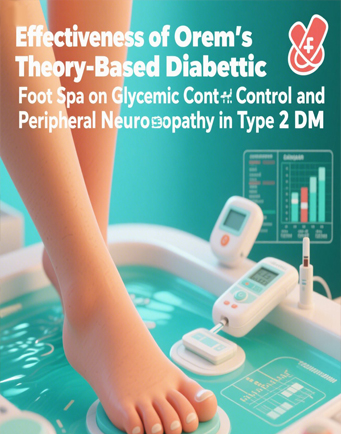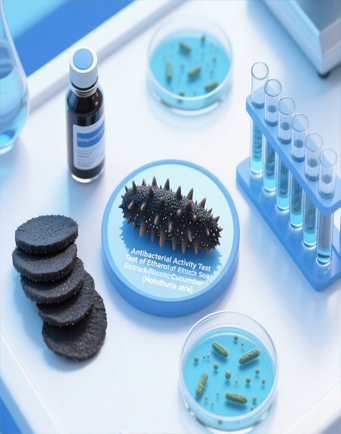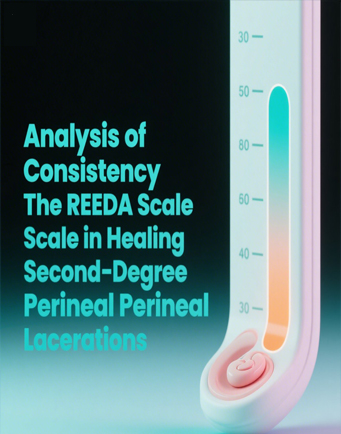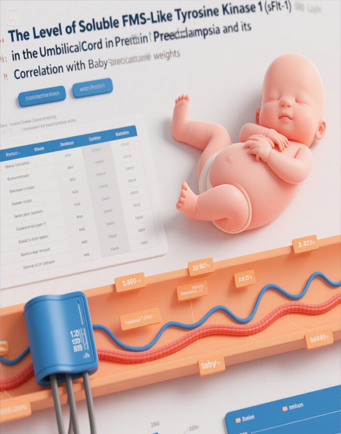Probiotic Edamame Yoghurt: A Study on Sensory, Microbiological, and Physicochemical Properties of Fermentation Using Mixed Cultures
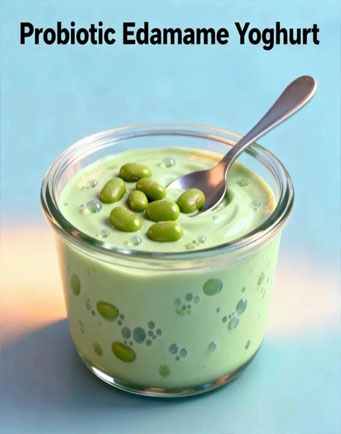
Downloads
One of the primary risk factors for cardiovascular diseases (CVDs) that caused deaths is hypercholesterolemia, which can be identified by high levels of total cholesterol, low-density lipoprotein (LDL), and very low-density lipoprotein (VLDL). Dietary interventions, involving the consumption of soy protein, have been indicated to be effective in reducing LDL cholesterol levels. Edamame, a kind of soybean, is a potential source of soy protein that could be processed into functional foods. The aim of the research was to evaluate the chemical and sensory properties of edamame yoghurt fermented with lactic acid bacteria and probiotic bacteria, potentially contributing to a cholesterol-lowering benefit. The research methodology was a two-factor Randomized Block Design (RBD). The edamame yoghurt was made by combining edamame juice, skim milk powder, and sugar, followed by heat (80-85 °C for 15 minutes), and cooling to 45 °C. The mixture was then inoculated with a combination of lactic acid bacteria (Lactobacillus bulgaricus and Streptococcus thermophilus) and probiotic bacteria (Bifidobacterium bifidum and Lactobacillus acidophilus). Fermentation proceeded at 37 °C for 7 hours. The pH, total titratable acidity, lactic acid bacteria count, and soluble protein content were analysed. Sensory properties were evaluated using preference and hedonic tests. The results exhibited that the combination of bacterial cultures significantly affected (p<0.05) pH, total soluble protein, and sensory properties of the yoghurt. Bifidobacterium bifidum led to higher acidity pH (3.73-3.78), while Lactobacillus acidophilus resulted in the lowest titratable acidity (0.55-0.63%). The combination of Lactobacillus bulgaricus and Streptococcus thermophilus improved flavor, texture, and fermentation efficiency. The yoghurt’s texture was smooth due to proteolytic activity by lactic acid bacteria. Edamame yoghurt's green color fades during fermentation, and its aroma is less favoured according to panelists, but its creamy texture and mildly acidic taste make it appealing overall. Edamame yoghurt, a source of soy protein fermented with lactic acid and probiotic bacteria, shows potential for cholesterol reduction.
Abdullah, M. (2024). Minuman probiotik air kelapa dengan starter lactobacillus casei dan bifidobacterium bifidum. Journal of Agritech Science (JASc), 8(1), 58–72. https://doi.org/10.30869/jasc.v8i1.1306
Agolino, G., Pino, A., Vaccalluzzo, A., Cristofolini, M., Solieri, L., Caggia, C., & Randazzo, C. L. (2024). Bile salt hydrolase: the complexity behind its mechanism in relation to lowering-cholesterol lactobacilli probiotics. Journal of Functional Foods, 120, 106357. https://doi.org/10.1016/j.jff.2024.106357
Ajeng, D., Ardiaria, M., Kurniawati, D. M., & Ayustaningwarno, F. (2022). The Effect of Edamame milk on Triglyceride Levels in Diabetes Wistar Rats. Sports Medicine Curiosity Journal, 1(2), 59–64. https://doi.org/10.15294/smcj.v1i2.61645
Anggraeni, S. L., Jayus, J., Ratnadewi, A. A. I., & Nurhayati, N. (2022). Edamame protein hydrolysis using lactococcus lactis, lactobacillus bulgaricus and lactobacillus paracasei produce short peptides with higher antioxidant potential. Biodiversitas Journal of Biological Diversity, 23(7), 3603-3612. https://doi.org/10.13057/biodiv/d230737
Ayivi, R. D., & Ibrahim, S. A. (2022). Lactic Acid Bacteria: An Essential Probiotic and Starter Culture for The Production of Yoghurt. International Journal of Food Science & Technology, 57(11), 7008–7025. https://doi.org/10.1111/ijfs.16076
Badan Standardisasi Nasional. (2009). Yoghurt (No. 2981:2009). Jakarta: Badan Standardisasi Nasional.
Badan Penelitian dan Pengembangan Kesehatan. (2013). Riset kesehatan dasar 2013. Jakarta: Badan Penelitian dan Pengembangan Kesehatan, Kementerian Kesehatan Republik Indonesia.
Badan Penelitian dan Pengembangan Kesehatan. (2019). Laporan Nasional Riskesdas 2018. Jakarta: Badan Penelitian dan Pengembangan Kesehatan, Kementerian Kesehatan Republik Indonesia.
Bierzuńska, P., Cais-Sokolińska, D., & Yiğit, A. (2019). Storage stability of texture and sensory properties of yogurt with the addition of polymerized whey proteins. Foods, 8(11), 548. https://doi.org/10.3390/foods8110548
Caponio, G. R., Wang, D. Q.-H., Di Ciaula, A., De Angelis, M., & Portincasa, P. (2020). Regulation of cholesterol metabolism by bioactive components of soy proteins: novel translational evidence. International Journal of Molecular Sciences, 22(1), 227. https://doi.org/10.3390/ijms22010227
Chen, C., Zhao, S., Hao, G., Yu, H., Tian, H., & Zhao, G. (2017). Role of lactic acid bacteria on the yogurt flavour: a review. International Journal of Food Properties, 20(sup1), S316–S330. https://doi.org/10.1080/10942912.2017.1295988
Deshwal, G. K., Tiwari, S., Kumar, A., Raman, R. K., & Kadyan, S. (2021). Review on factors affecting and control of post-acidification in yoghurt and related products. Trends in Food Science & Technology, 109, 499–512. https://doi.org/10.1016/j.tifs.2021.01.057
Fitriyana, N. I. (2017). Potensi Pangan fungsional berbasis edamame sebagai pangan antikolesterol. Jurnal Reka Pangan, 11(1). Retrieved from: http://www.ejournal.upnjatim.ac.id/index.php/teknologi-pangan/article/view/749
Kang, S.-S., Kim, M. K., & Kim, Y.-J. (2019). Comprehensive evaluation of microbiological and physicochemical properties of commercial drinking yogurts in korea. Food Science of Animal Resources, 39(5), 820–830. https://doi.org/10.5851/kosfa.2019.e72
Kieliszek, M., Pobiega, K., Piwowarek, K., & Kot, A. M. (2021). Characteristics of the proteolytic enzymes produced by lactic acid bacteria. Molecules, 26(7), 1858. https://doi.org/10.3390/molecules26071858
Matela, K. S., Pillai, M. K., & Thamae, T. (2019). Evaluation of pH, Titratable Acidity, Syneresis and Sensory Profiles of Some Yoghurt Samples from The Kingdom of Lesotho. Food Research, 3(6), 693–697. https://doi.org/10.26656/fr.2017.3(6).177
Meilgaard, M. C., Carr, B. T., & Carr, B. T. (2020). Sensory Evaluation Techniques. CRC Press. Retrieved from: https://www.taylorfrancis.com/books/9781420005561
Melia, S., Juliyarsi, I., Fitri Kurnia, Y., Endra Pratama, Y., & Azahra, H. (2021). Examination of Titratable acidity, ph, total lactic acid bacteria and sensory properties in whey fermented with probiotic pediococcus acidilactic BK01. Advances in Animal and Veterinary Sciences, 10(1), 114-119. https://doi.org/10.17582/journal.aavs/2022/10.1.114.119
Meybodi, N. M., Mortazavian, A. M., Arab, M., & Nematollahi, A. (2020). Probiotic viability in yoghurt: a review of influential factors. International Dairy Journal, 109, 104793. https://doi.org/10.1016/j.idairyj.2020.104793
Pourrajab, B., Fatahi, S., Dehnad, A., Kord Varkaneh, H., & Shidfar, F. (2020). The impact of probiotic yogurt consumption on lipid profiles in subjects with mild to moderate hypercholesterolemia: a systematic review and meta-analysis of randomized controlled trials. Nutrition, Metabolism and Cardiovascular Diseases, 30(1), 11–22. https://doi.org/10.1016/j.numecd.2019.10.001
Ramadhani, E. P., Mustofa, A., Puyanda, I. R., & Jokopriyambodo, W. (2024). Effect of adding chlorophyll extract of suji leaves (dracaena angustifolia) and fermentation time on yogurt characteristics. Agric, 36(2), 213-230. https://doi.org/10.24246/agric.2024.v36.i2.p213-230
Rosiana, N. M., & Amareta, D. I. (2016). Karakteristik yogurt edamame hasil fermentasi kultur campuran bakteri asam laktat komersial sebagai pangan fungsional berbasis biji-bijian. Jember: Seminar Hasil Penelitian dan Pengabdian Masyarakat Dana BOPTN Tahun 2016.
Routray, W., & Mishra, H. N. (2011). Scientific and technical aspects of yogurt aroma and taste: a review. Comprehensive Reviews in Food Science and Food Safety, 10(4), 208-220. https://doi.org/10.1111/j.1541-4337.2011.00151.x
Santra, K., Song, A., Petrich, J. W., & Rasmussen, M. A. (2021). The degradation of chlorophyll pigments in dairy silage: the timeline of anaerobic fermentation. Journal of the Science of Food and Agriculture, 101(7), 2863–2868. https://doi.org/10.1002/jsfa.10917
Sumi, K., Tagawa, R., Yamazaki, K., Nakayama, K., Ichimura, T., Sanbongi, C., & Nakazato, K. (2023). Nutritional value of yogurt as a protein source: digestibility/absorbability and effects on skeletal muscle. Nutrients, 15(20), 4366. https://doi.org/10.3390/nu15204366
Valensia, Y., Wiboworini, B., & Hikmayani, N. H. (2024). The effect of edamame jelly on lowering blood pressure in primary hypertension patients. JURNAL INFO KESEHATAN, 22(2), 357-368. https://doi.org/10.31965/infokes.Vol22.Iss2.1538
Wang, Y., Wu, J., Lv, M., Shao, Z., Hungwe, M., Wang, J., Bai, X., Xie, J., Wang, Y., & Geng, W. (2021). Metabolism characteristics of lactic acid bacteria and the expanding applications in food industry. Frontiers in Bioengineering and Biotechnology, 9, 612285. https://doi.org/10.3389/fbioe.2021.612285
Warakaulle, S., Mohamed, H., Ranasinghe, M., Shah, I., Yanyang, X., Chen, G., Ayyash, M. M., Vincent, D., & Kamal-Eldin, A. (2024). Advancement of milk protein analysis: from determination of total proteins to their identification and quantification by proteomic approaches. Journal of Food Composition and Analysis, 126, 105854. https://doi.org/10.1016/j.jfca.2023.105854
Yu, D., Lord, N., Polk, J., Dhakal, K., Li, S., Yin, Y., Duncan, S. E., Wang, H., Zhang, B., & Huang, H. (2022). Physical and chemical properties of edamame during bean development and application of spectroscopy-based machine learning methods to predict optimal harvest time. Food Chemistry, 368, 130799. https://doi.org/10.1016/j.foodchem.2021.130799
Copyright (c) 2025 JURNAL INFO KESEHATAN

This work is licensed under a Creative Commons Attribution-NonCommercial-ShareAlike 4.0 International License.
Copyright notice
Ownership of copyright
The copyright in this website and the material on this website (including without limitation the text, computer code, artwork, photographs, images, music, audio material, video material and audio-visual material on this website) is owned by JURNAL INFO KESEHATAN and its licensors.
Copyright license
JURNAL INFO KESEHATAN grants to you a worldwide non-exclusive royalty-free revocable license to:
- view this website and the material on this website on a computer or mobile device via a web browser;
- copy and store this website and the material on this website in your web browser cache memory; and
- print pages from this website for your use.
- All articles published by JURNAL INFO KESEHATAN are licensed under the Creative Commons Attribution 4.0 International License. This permits anyone to copy, redistribute, remix, transmit and adapt the work provided the original work and source is appropriately cited.
JURNAL INFO KESEHATAN does not grant you any other rights in relation to this website or the material on this website. In other words, all other rights are reserved.
For the avoidance of doubt, you must not adapt, edit, change, transform, publish, republish, distribute, redistribute, broadcast, rebroadcast or show or play in public this website or the material on this website (in any form or media) without appropriately and conspicuously citing the original work and source or JURNAL INFO KESEHATAN prior written permission.
Permissions
You may request permission to use the copyright materials on this website by writing to jurnalinfokesehatan@gmail.com.
Enforcement of copyright
JURNAL INFO KESEHATAN takes the protection of its copyright very seriously.
If JURNAL INFO KESEHATAN discovers that you have used its copyright materials in contravention of the license above, JURNAL INFO KESEHATAN may bring legal proceedings against you seeking monetary damages and an injunction to stop you using those materials. You could also be ordered to pay legal costs.
If you become aware of any use of JURNAL INFO KESEHATAN copyright materials that contravenes or may contravene the license above, please report this by email to jurnalinfokesehatan@gmail.com
Infringing material
If you become aware of any material on the website that you believe infringes your or any other person's copyright, please report this by email to jurnalinfokesehatan@gmail.com.










